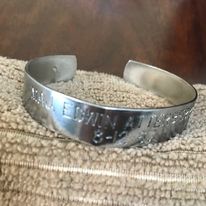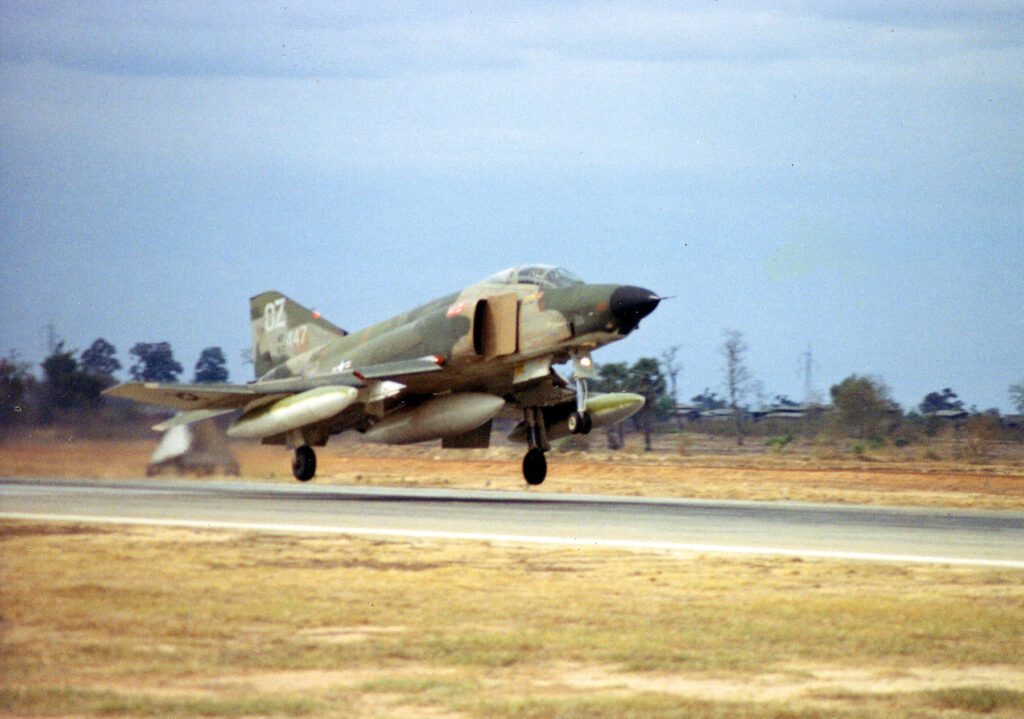Honoring Lt Colonel Edwin L. Atterberry, USAF

On this Memorial Day, I am departing from my usual blog posts about the crew of USS Franklin to honor a US Air Force prisoner of war from the Vietnam War who gave his life in the service of his country.
In the 1960s and 1970s, it was customary for many people to keep American POWs in our memories by wearing stainless steel bracelets with their name, rank, and date of capture. I wore two, the first one bearing the name of a sergeant whose name is lost to my memory. When it broke after daily wear and tear, I ordered another and this one came with the name of Major Edwin Atterberry and the date of capture listed as 8-12-1967.

Atterberry’s Early Years
Atterberry was born in Klondike, TX, a small town in the northeast part of the state between Commerce and Cooper in Delta county*. Raised in Dallas, he graduated from Woodrow Wilson High School where he was in ROTC. In 1956 he was commissioned a 2nd Lieutenant in the US Air Force. He spent his career flying reconnaissance aircraft, first in RF-84s, then RF-101s. In October 1962, he flew overflights of Cuba during the Cuban Missile Crisis, most likely from Shaw Air Force Base in South Carolina.
In 1965 he was transferred to Mountain Home Air Force Base in Idaho with the 10th and 11th Tactical Reconnaissance Squadrons where he learned to fly the RF-4C Phantom II. The RF-4 had a crew of two, a pilot and a Weapons Systems Officer.

Atterberry Becomes a Prisoner of War
In late 1966, he was assigned to temporary duty in Southeast Asia. Flying an RF-4 was dangerous work. Their mission was reconnaissance, instead of weapons they carried cameras. (Unofficial motto: “Alone, Unarmed, and Scared Shitless.”)
On 12 August 1967, Atterberry, now a captain, and his Weapons System Officer, Captain Thomas V. Parrot were flying a reconnaissance mission over the Ha Bac Province in North Vietnam when their aircraft was disabled by a Surface to Air (SAM) missile forcing them to eject. Captured by the North Koreans, they were taken to an annex of the notorious prison camp, the “Hanoi Hilton,” called “the Zoo.”
Escape, Recapture, and Torture
On 10 May 1969, Atterberry and another prisoner, John A. Dramesi escaped through the roof of the prison after nearly a year of planning. They were able to evade capture for nearly 12 hours before the North Vietnamese discovered them three miles away.
Atterberry, promoted to Major while a POW was seen briefly by one POW who managed to shake his hand. But no other POW ever had any more contact with him. No record exists of the specifics of what the North Vietnamese did to Atterberry, but it was probably similar to what happened to Dramesi who described his torture:
Dramesi was put face down on a table, and while one guard
held his head, two others beat him with a four foot length of rubber taken
from an old automobile tire. They also slapped him repeatedly in the face.
This went on for days, in ninety-minute sessions, after which the left side
of Dramesi’s head was swelled up like a pumpkin. They also put Dramesi on a
bread and water diet for 30 days. At other times during the next two weeks,
Dramesi’s arms were bound tightly together behind him and his wrists and
ankles cuffed in heavy irons. A rope was looped around a two-inch-thick bar
attached to his ankle irons, taken around his shoulders and his head drawn
between his knees.He was held in this position for 24 hours without sleep. His circulation
impaired, the flesh on his ankles died, and he still bears the scars. After
two weeks, the Vietnamese realized he might lose his feet, so they removed
the irons and treated the wounds, but replaced them. Dramesi wore the irons
continuously for 6 months, removing them only once a week when allowed to
wash.After 38 days of this torture, Dramesi was near death.
He was able to survive his torture. Atterberry did not.
But it wasn’t just Atterberry and Dramesi that were tortured. Every POW in the complex was brutalized as punishment for the escape. The severity of the torture caused the senior officers to modify the Code of Conduct which stated that it was a POW’s duty to escape. Now, escape attempts had to meet stringent criteria including having outside help before being approved by the senior officers.
Colonel Richard Dutton (RET), later reported Atterberry was seen by other POWs as he was removed from his cell, “in a bloody mess.” The North Vietnamese reported he died on May 18, 1969.
He was posthumously promoted to Lieutenant Colonel and was given the following awards:
- Air Force Cross
- Silver Star Medal
- Legion of Merit
- Distinguished Flying Cross with 2 Oak Leaf Clusters and V Device
- Bronze Star Medal with V Device
- Purple Heart with 1 Oak Leaf Cluster
- Air Medal with 3 Oak Leaf Clusters
His Air Force Cross Citation Reads:
The President of the United States of America, authorized by Section 8742, Title 10, United States Code, awards the Air Force Cross to Lieutenant Colonel Edwin L. Atterberry for extraordinary heroism in military operations against an opposing armed force as a Prisoner of War in North Vietnam from 11 May 1969 to 14 May 1969. On 11 May 1969, Colonel Atterberry escaped from the North Vietnamese prison camp known as “The Zoo” and was recaptured twelve hours later. He was subjected to brutal torture for confessions pertaining to camp leadership, organization, and details of his escape plans. He was last seen by other prisoners of war on 14 May 1969, and the North Vietnamese later reported that Colonel Atterberry had died. Through his extraordinary heroism and aggressiveness in the face of the enemy, and in the dedication of his service to his country, Colonel Atterberry reflected the highest credit upon himself and the United States Air Force.
His remains were returned in March 1974 and he was buried in Dallas, Texas in Restland Memorial Park. His name is listed on Panel 24E, Line 102 of the Vietnam Memorial in Washington, DC.
*I was living in Georgia and attending high school when I wore Lieutenant Colonel Atterberry’s POW bracelet. But several times I followed some of his paths. I was nine years old during the Cuban Missile Crisis when he was flying reconnaissance missions over Cuba. At that time, my family and I lived in San Antonio, home to four military bases and well within the range of Russian missiles. Even at nine years old, I remember the talk, on TV and among our neighbors, many of whom were military families. Everyone assumed San Antonio was a target. We had an evacuation plan from home and another from school.
Later, in my first job with the American Cancer Society, Delta County, Atterberry’s birthplace, would be in my territory. And I lived in Dallas for five years while in my twenties.
My heart goes out to his family and I will do my best to keep his memory alive.